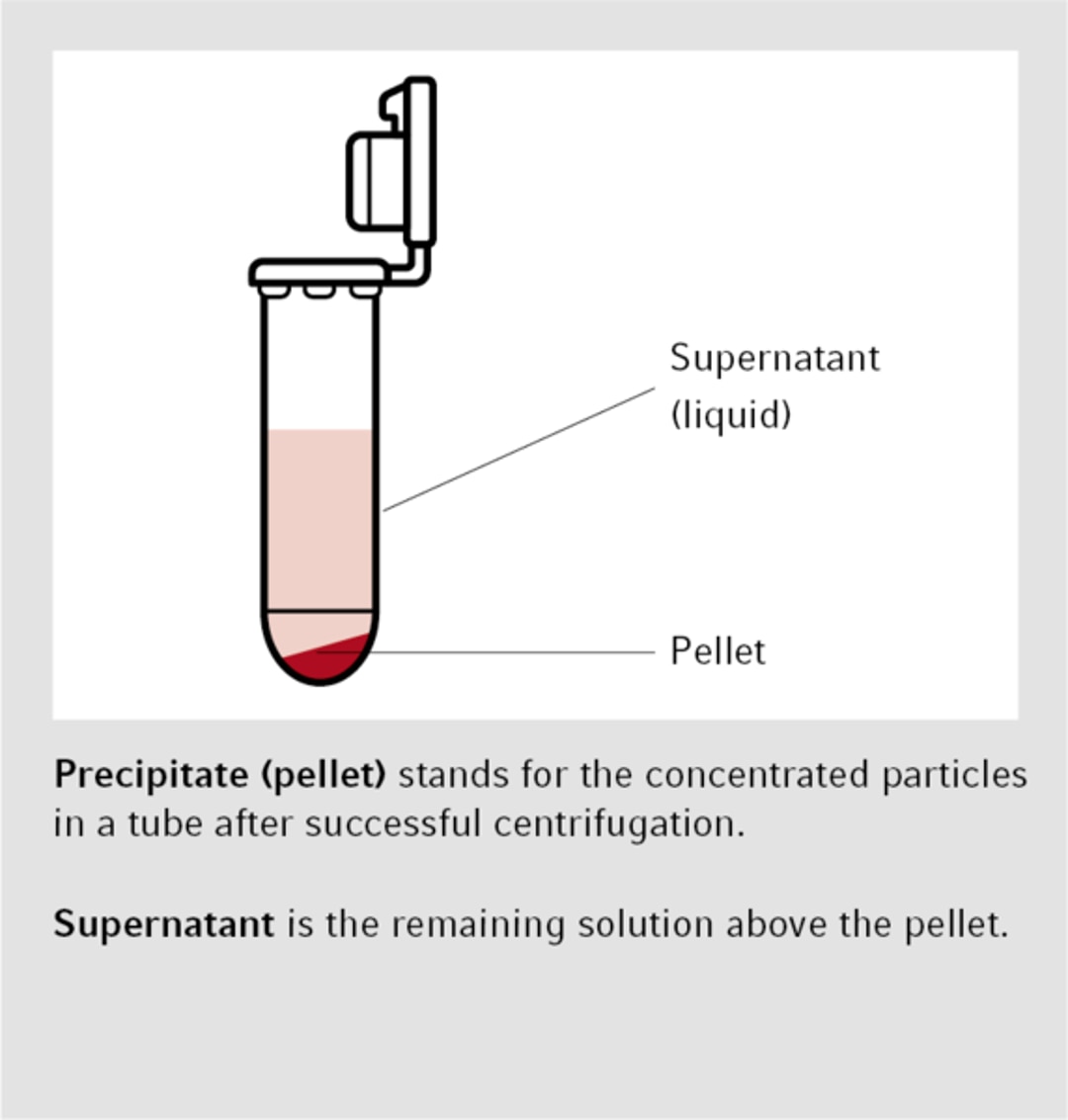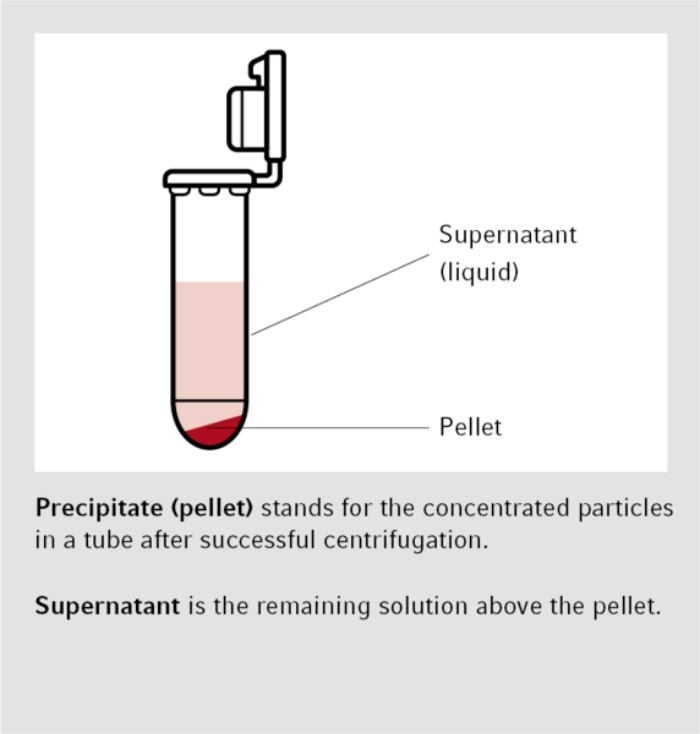メニュー
JP | JPY
-
-
-
- Challenges and Chances: A Review of the 1st Stem Cell Community Day
- Summertime, and the Livin’ Is Easy…
- Follow-on-Biologics – More than Simple Generics
- Bacteria Versus Body Cells: A 1:1 Tie
- Behind the Crime Scene: How Biological Traces Can Help to Convict Offenders
- Every 3 Seconds Someone in the World Is Affected by Alzheimer's
- HIV – It’s Still Not Under Control…
- How Many Will Be Convicted This Time?
- Malaria – the Battle is Not Lost
- Physicians on Standby: The Annual Flu Season Can Be Serious
- At the Forefront in Fighting Cancer
- Molecular Motors: Think Small and yet Smaller Again…
- Liquid Biopsy: Novel Methods May Ease Cancer Detection and Therapy
- They Are Invisible, Sneaky and Disgusting – But Today It’s Their Special Day!
- How Many Cells Are in Your Body? Probably More Than You Think!
- What You Need to Know about Antibiotic Resistance – Findings, Facts and Good Intentions
- Why Do Old Men Have Big Ears?
- The Condemned Live Longer: A Potential Paradigm Shift in Genetics
- From Research to Commerce
- Chronobiology – How the Cold Seasons Influence Our Biorhythms
- Taskforce Microbots: Targeted Treatment from Inside the Body
- Eyes on Cancer Therapy
-
-
-
-
-
- Challenges and Chances: A Review of the 1st Stem Cell Community Day
- Summertime, and the Livin’ Is Easy…
- Follow-on-Biologics – More than Simple Generics
- Bacteria Versus Body Cells: A 1:1 Tie
- Behind the Crime Scene: How Biological Traces Can Help to Convict Offenders
- Every 3 Seconds Someone in the World Is Affected by Alzheimer's
- HIV – It’s Still Not Under Control…
- How Many Will Be Convicted This Time?
- Malaria – the Battle is Not Lost
- Physicians on Standby: The Annual Flu Season Can Be Serious
- At the Forefront in Fighting Cancer
- Molecular Motors: Think Small and yet Smaller Again…
- Liquid Biopsy: Novel Methods May Ease Cancer Detection and Therapy
- They Are Invisible, Sneaky and Disgusting – But Today It’s Their Special Day!
- How Many Cells Are in Your Body? Probably More Than You Think!
- What You Need to Know about Antibiotic Resistance – Findings, Facts and Good Intentions
- Why Do Old Men Have Big Ears?
- The Condemned Live Longer: A Potential Paradigm Shift in Genetics
- From Research to Commerce
- Chronobiology – How the Cold Seasons Influence Our Biorhythms
- Taskforce Microbots: Targeted Treatment from Inside the Body
- Eyes on Cancer Therapy
-
-
JP | JPY
Sorry, we couldn't find anything on our website containing your search term.
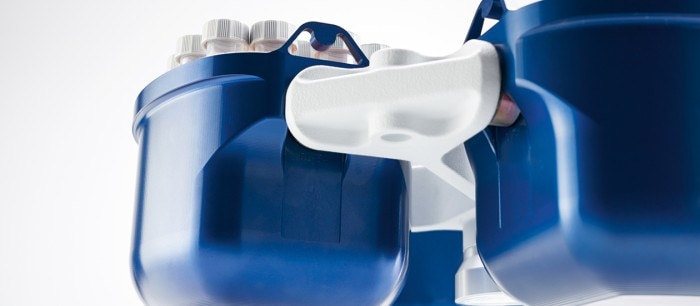
Basics in Centrifugation - Calculating relative centrifugal force and selecting a centrifuge and rotors
Lab Academy
- 細胞生物学
- 遠心機
- 遠心機およびローター
- エッセー
What is a centrifuge, and how does a centrifuge work?
Centrifugation is a technique that helps to separate mixtures by applying centrifugal force. A centrifuge is a device, generally driven by an electric motor, that puts an object, e.g., a rotor, in a rotational movement around a fixed axis. A centrifuge works by using the principle of sedimentation: Under the influence of gravitational force (g-force), substances separate according to their density. Different types of separation are known, including isopycnic, ultrafiltration, density gradient, phase separation, and pelleting.
Pelleting is the most common application for centrifuges in laboratories. Here, centrifugal force concentrates into a pellet at the bottom of the centrifuge tube, with the pellet being separated from the remaining solution (supernatant). During phase separation, chemicals are converted from a matrix or an aqueous medium to a solvent (for additional chemical or molecular biological analysis).
In ultrafiltration, macromolecules are purified, separated, and concentrated by using a membrane. Isopycnic centrifugation is carried out using a "self-generating" density gradient established through equilibrium sedimentation. This method concentrates the analysis matches with those of the surrounding solution. Protocols for centrifugation typically specify the relative centrifugal force (rcf) and the degree of acceleration in multiples of g (g-force). Working with the rotational speed, such as revolutions per minute (rpm), is rather imprecise.
Pelleting is the most common application for centrifuges in laboratories. Here, centrifugal force concentrates into a pellet at the bottom of the centrifuge tube, with the pellet being separated from the remaining solution (supernatant). During phase separation, chemicals are converted from a matrix or an aqueous medium to a solvent (for additional chemical or molecular biological analysis).
In ultrafiltration, macromolecules are purified, separated, and concentrated by using a membrane. Isopycnic centrifugation is carried out using a "self-generating" density gradient established through equilibrium sedimentation. This method concentrates the analysis matches with those of the surrounding solution. Protocols for centrifugation typically specify the relative centrifugal force (rcf) and the degree of acceleration in multiples of g (g-force). Working with the rotational speed, such as revolutions per minute (rpm), is rather imprecise.
もっと読む
Important definitions
Degree of acceleration
In general, applications for centrifugation specify the degree of acceleration to be applied to the sample rather than specifying a specific rotational speed such as revolutions per minute. The acceleration is typically given in gravity [× g] (or multiples of x g or g-force), the standard acceleration value due to gravity at the Earth’s surface (9.81 m/s2).
もっと読む
Rcm vs rpm:
The distinction between rcf and rpm is important, as two rotors with different diameters running at the same rotational speed (rpm) will result in different accelerations (rcf).
もっと読む
How to calculate relative centrifugal force (rcf)
As the motion of the rotor is circular, the acceleration force is calculated as the product of the radius and the square of the angular velocity. Historically known as “relative centrifugal force” (rcf), this is the measurement of the acceleration applied to a sample within a circular movement. This process is measured in units of gravity (× g).
もっと読む
Example g to rpm conversion*
| Rotor A | Rotor B | |
| Speed | 14,000 rpm | 14,000 rpm |
| Radius | 5.98 cm | 9.50 cm |
| Gravity | 13,100 x g | 20,817 x g |
もっと読む
*using the formula above
As mentioned, when using rotors with different radii for centrifugation, the same rcf (g-force) should be used.
もっと読む
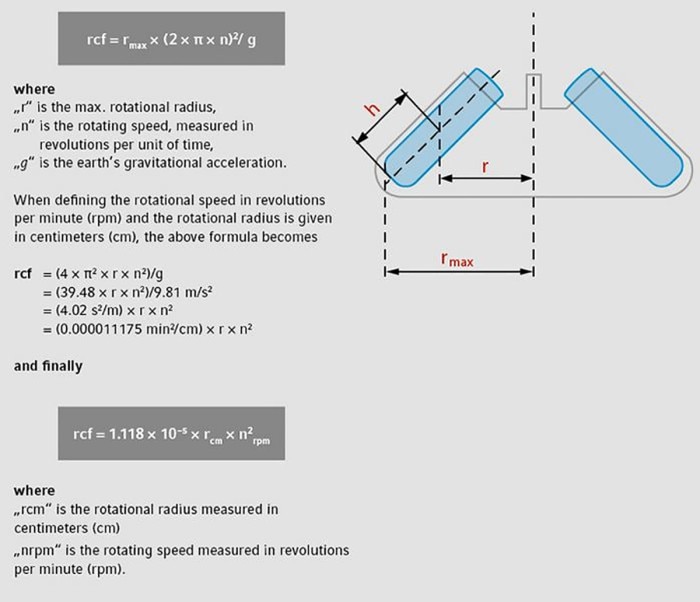
Both centrifuges can spin a rotor with 1.5/ 2 mL tubes at the same speed (14,000 rpm) but the acceleration applied to the samples is very different: 13,100 × g versus 20,817 × g, resulting in different results. To make life easier and to better reproduce the data, some centrifuges have buttons directly on the operating panel for automatic conversion between rcf and rpm.
If your centrifuge does not have a rcf-rpm converter, you may use the formula above or the rcf-rpm calculator tool below. Alternatively, rcf-rpm calculators and g to rpm calculators can be found on centrifuge supplier websites, or a nomogram for conversion.
If your centrifuge does not have a rcf-rpm converter, you may use the formula above or the rcf-rpm calculator tool below. Alternatively, rcf-rpm calculators and g to rpm calculators can be found on centrifuge supplier websites, or a nomogram for conversion.
もっと読む
Centrifuge g to rpm Speed Calculator
Find our Centrifuge Speed Calculator here – a vital tool for any laboratory professional. This easy-to-use g to rpm calculator simplifies the conversion between relative centrifugal force (rcf or x g) and revolutions per minute (rpm), allowing you to perform rcf to rpm conversions (g to rpm conversions) and vice versa.
もっと読む
The k-factor is a parameter for the sedimentation distance in a test tube. This factor is also called clearing factor and represents the relative pelleting efficiency of a centrifugation system at maximum rotational speed. In general, the k-factor value is used to estimate the time, t (in hours), required for complete sedimentation of a sample fraction with a known sedimentation coefficient measured in s (svedberg).
A small k-factor represents a more rapid separation. The value of the k-factor is primarily determined by the rotor diameter. Compared to rpm/rcf, the usage of the k-factor has become less important for general centrifugation processes. Especially for ultracentrifugation, the k-factor is still relevant.
If you follow a given protocol, make sure to use the same type of rotor and apply the given relative centrifugal force (rcf) as well as the same temperature and running time. In general, the following major parameters have to be determined for a successful centrifugation run:
A: Type of sample
B: Vessel selection
C: Type of centrifuge
D: Type of rotor
E: Determination of desired relative centrifugal force
F: Defined temperature during centrifugation
A small k-factor represents a more rapid separation. The value of the k-factor is primarily determined by the rotor diameter. Compared to rpm/rcf, the usage of the k-factor has become less important for general centrifugation processes. Especially for ultracentrifugation, the k-factor is still relevant.
How to select the right centrifuge for your application
If you follow a given protocol, make sure to use the same type of rotor and apply the given relative centrifugal force (rcf) as well as the same temperature and running time. In general, the following major parameters have to be determined for a successful centrifugation run:
A: Type of sample
B: Vessel selection
C: Type of centrifuge
D: Type of rotor
E: Determination of desired relative centrifugal force
F: Defined temperature during centrifugation
もっと読む
Fixed-angle or swing-bucket rotors?
The most common rotors in laboratory centrifugation are either fixed-angle or swing-bucket rotors. Only a few applications require special rotors such as continuous-flow rotors, drum rotors, and the like. Flow-through rotors enable continuous flow collection of precipitates. These systems are used, e.g., in harvesting fermenters or for juice production in the food industry. Special customized versions, optimized for the specific application, are necessary.
もっと読む
Fixed-angle rotor
The obvious advantage is the lack of moving parts in the rotor. This results in lower metal stress (longer lifetime), a higher maximum g-force is possible and for many applications, faster centrifugation times can be realized.
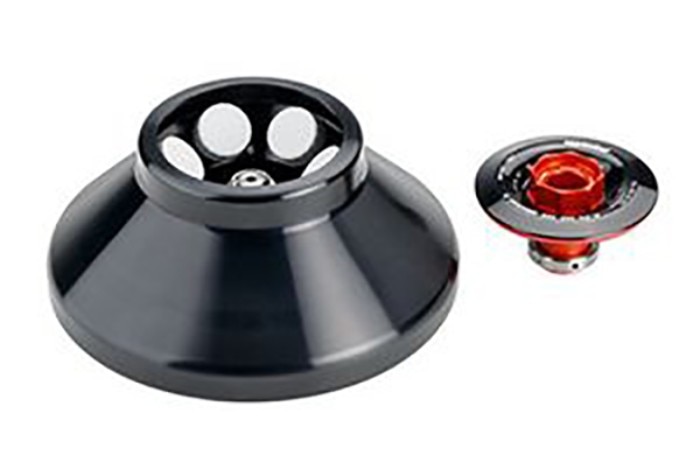
The limited capacity (less flexibility) of the fixed-angle rotor is the only drawback. The position of the pellet strongly depends on the angle of the tube, it is located from the side to the bottom of the tube when spinning. Most rotors have a 45° angle for the tubes. The larger the angle for the tubes, the tighter the pellet. Smaller rotor angles result in more spread out pellet areas.
もっと読む
Swing-bucket rotor
This kind of rotor is highly flexible for using different tube formats, including SBS-format plates, based on a broad range of adapter systems and a high sample capacity.
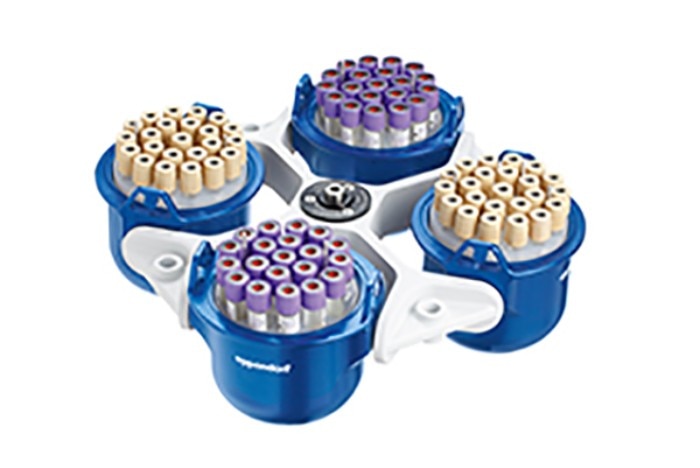
The moving swing-bucket parts result in increased metal stress for the rotor and the buckets as the bucket weight places a load on the two pivots and grooves. Compared with a fixed-angle rotor, therefore, a swing-bucket rotor is limited to a lower maximum g-force, which leads to longer centrifugation times. Based on the swing-bucket principle, the pellet is located in the bottom of the tube (horizontal position of tube during the run). The recovery by the user is facilitated compared to pellets located at the side of the tube.
もっと読む
The centrifuge
In general, centrifuges are classified either as floor-standing or bench-top models.
もっと読む
Videos not loading, because cookies have been rejected. Change your

Floor-standing centrifuges
もっと読む

Floor-standing centrifuges free up bench space but do need at least one square meter of lab floor space. They are a good choice for high-speed or high-capacity protocols. Among floor-standing centrifuges, choices include ultracentrifuges, high-speed centrifuges, and low-speed centrifuges. An ultracentrifuge is a device for exceptionally high speed, being capable of generating ultra-high centrifugal force. These refrigerated centrifuges have an evacuated chamber to enable a rotational speed of up to 150,000 rpm. The g-force is about 300,000 to 1,000,000 × g. Special vessels that are placed within the rotor or attached to a special rotor are necessary. When g-forces of 40,000 to 60,000 × g are needed, super-speed floor-standing centrifuges are to be used. Low-speed floor-standing devices are generally used for applications like cell culture or blood with less than 10,000 rcf as the maximum g-force.
もっと読む
Bench-top centrifuges
もっと読む

Bench-top centrifuges are available in different sizes:
Microcentrifuges are optimized for low-volume tubes, have a small footprint, and provide 14,000 to 30,000 × g for up to 48 microtubes. Some devices can even be used for a few 15 mL or 50 mL conical tubes or 2 SBS-format plates. Many suppliers offer non-refrigerated and refrigerated versions and different sizes of devices based on their tube capacity.
Explore Eppendorf microcentrifuges
Offering a bigger rotor chamber, multipurpose centrifuges allow a broad range of rotors to be used (highly versatile). In addition to a flexible rotor system, specific adapter systems enable use of a wide variety of different kinds of tubes and bottles (from 0.2 mL to 1,000 mL) as well as plates. The maximum speed heavily depends on the vessel’s characteristics.
Explore Eppendorf multipurpose centrifuges
- Microcentrifuges
Microcentrifuges are optimized for low-volume tubes, have a small footprint, and provide 14,000 to 30,000 × g for up to 48 microtubes. Some devices can even be used for a few 15 mL or 50 mL conical tubes or 2 SBS-format plates. Many suppliers offer non-refrigerated and refrigerated versions and different sizes of devices based on their tube capacity.
Explore Eppendorf microcentrifuges
- Multipurpose centrifuges
Offering a bigger rotor chamber, multipurpose centrifuges allow a broad range of rotors to be used (highly versatile). In addition to a flexible rotor system, specific adapter systems enable use of a wide variety of different kinds of tubes and bottles (from 0.2 mL to 1,000 mL) as well as plates. The maximum speed heavily depends on the vessel’s characteristics.
Explore Eppendorf multipurpose centrifuges
もっと読む
Centrifuge Maintenance and Safety
No matter which type of centrifuge you choose, routine centrifuge maintenance is a must to ensure safe and effective centrifugation. This includes regularly inspecting the centrifuge and rotors for signs of corrosion or damage, in addition to cleaning, disinfection, sterilization (especially if dealing with pathogenic samples), and lubrication. Following best practices for safe operation is also essential, including correctly balancing samples and loading the rotor.
もっと読む
Videos not loading, because cookies have been rejected. Change your

Centrifuge Speed Calculator
Try our Centrifuge Speed Calculator – a vital tool for any laboratory professional.
もっと読む

